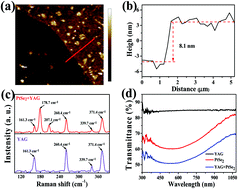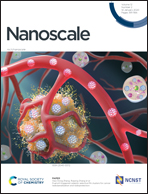The visible nonlinear optical properties and passively Q-switched laser application of a layered PtSe2 material
Abstract
Platinum diselenide (PtSe2), a type-II Dirac semi-metal material, is a potential saturable absorber (SA) to generate visible pulsed lasers due to its prominent optoelectronic properties. A high quality PtSe2 thin film was fabricated by combining magnetron sputtering with chemical vapor deposition methods; then, its microtopography was characterized by atomic force microscopy. The saturable absorption properties and electron relaxation time in the visible region were measured via open-aperture Z-scan and femtosecond pump probe technology, respectively. The modulation depth and saturable intensity are 39.9% and 256.6 GW cm−2, respectively. The relaxation time constants were fitted to be τ1 = (1.405 ± 0.024) ps, τ2 = (99.03 ± 0.01) ps, and τ3 = (2.032 ± 0.27) ns. The as-prepared PtSe2 thin film was experimentally applied as a novel SA to achieve a stable passively Q-switched (PQS) Pr:YLF visible laser. A shortest pulse width of 91.8 ns with a maximum repetition rate of 297.6 kHz was obtained. These results demonstrate that the PtSe2 thin film has promising applications in generating visible pulsed lasers.



 Please wait while we load your content...
Please wait while we load your content...